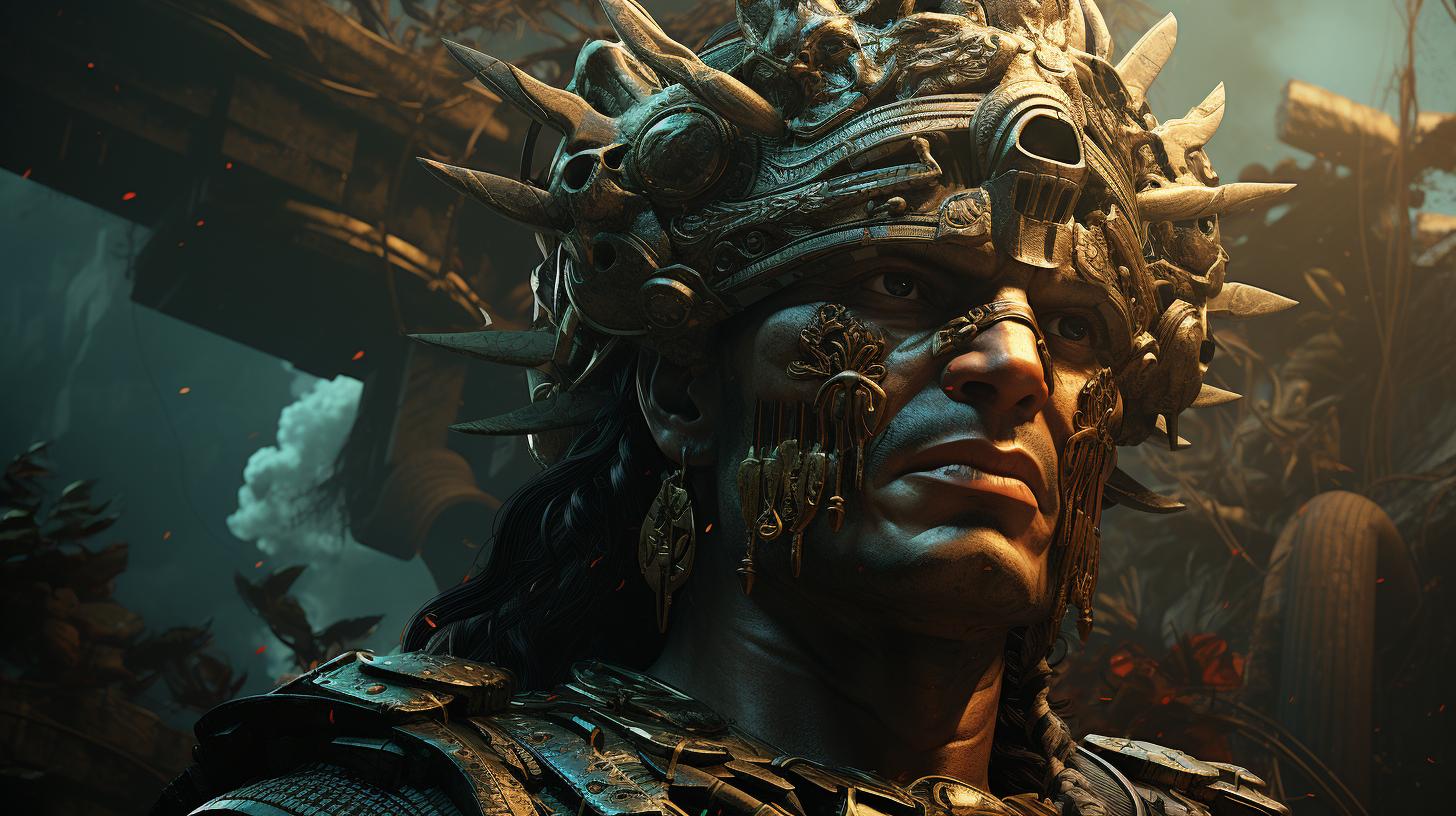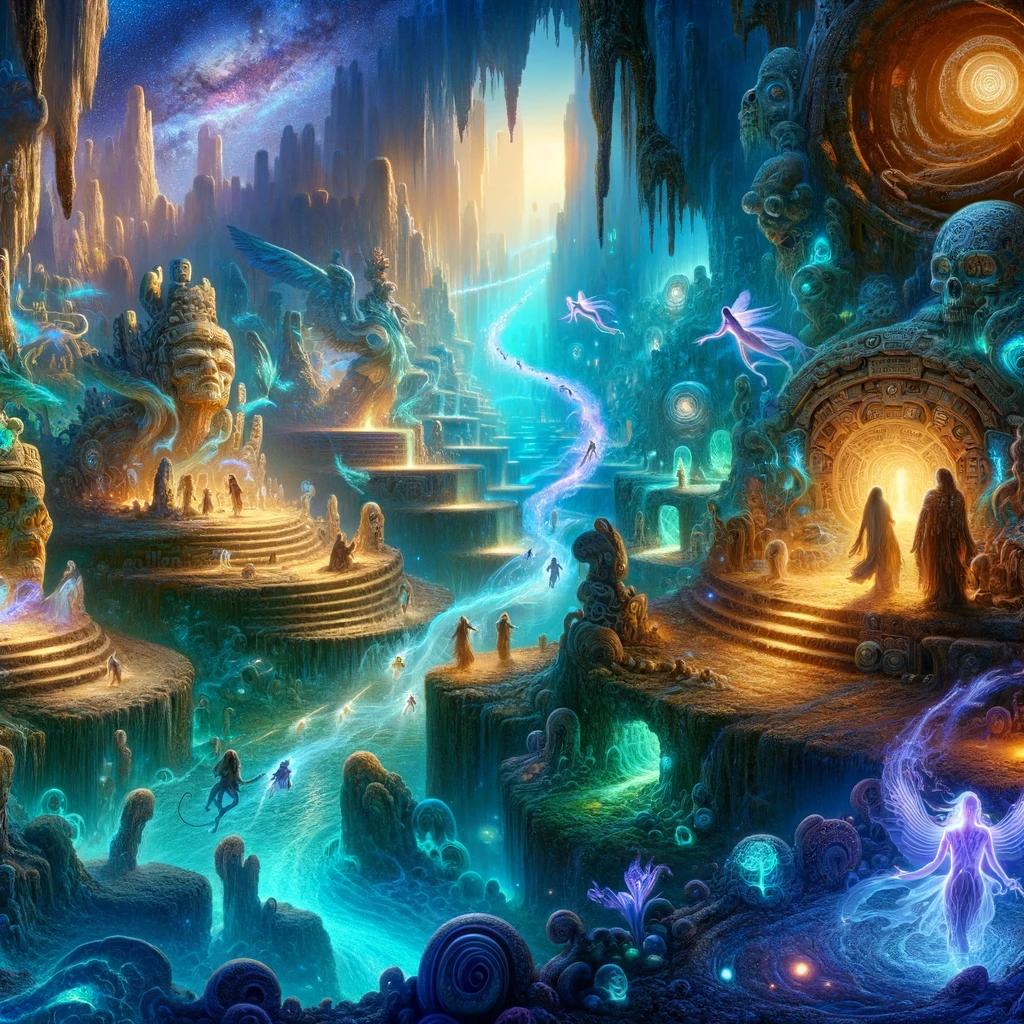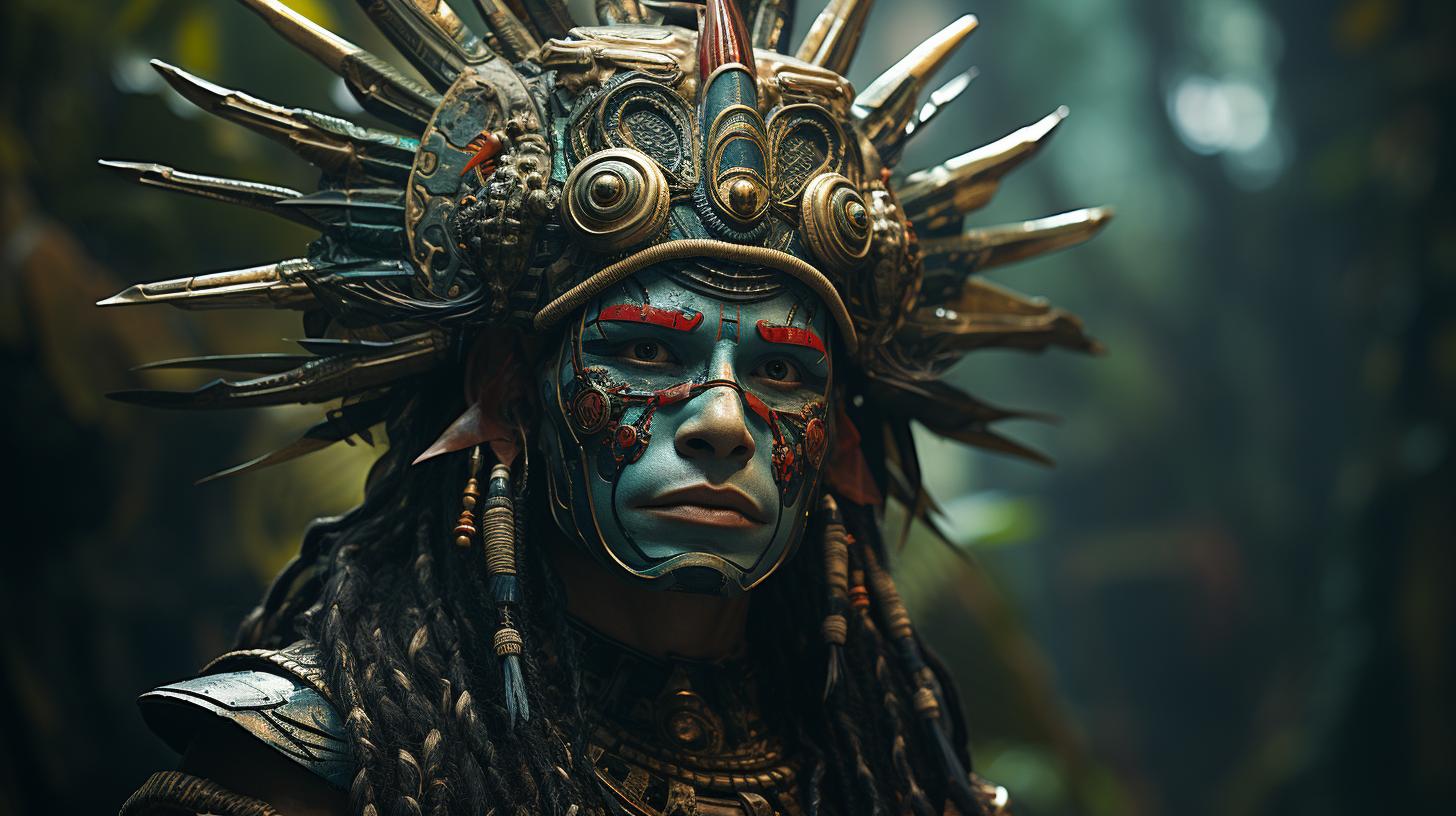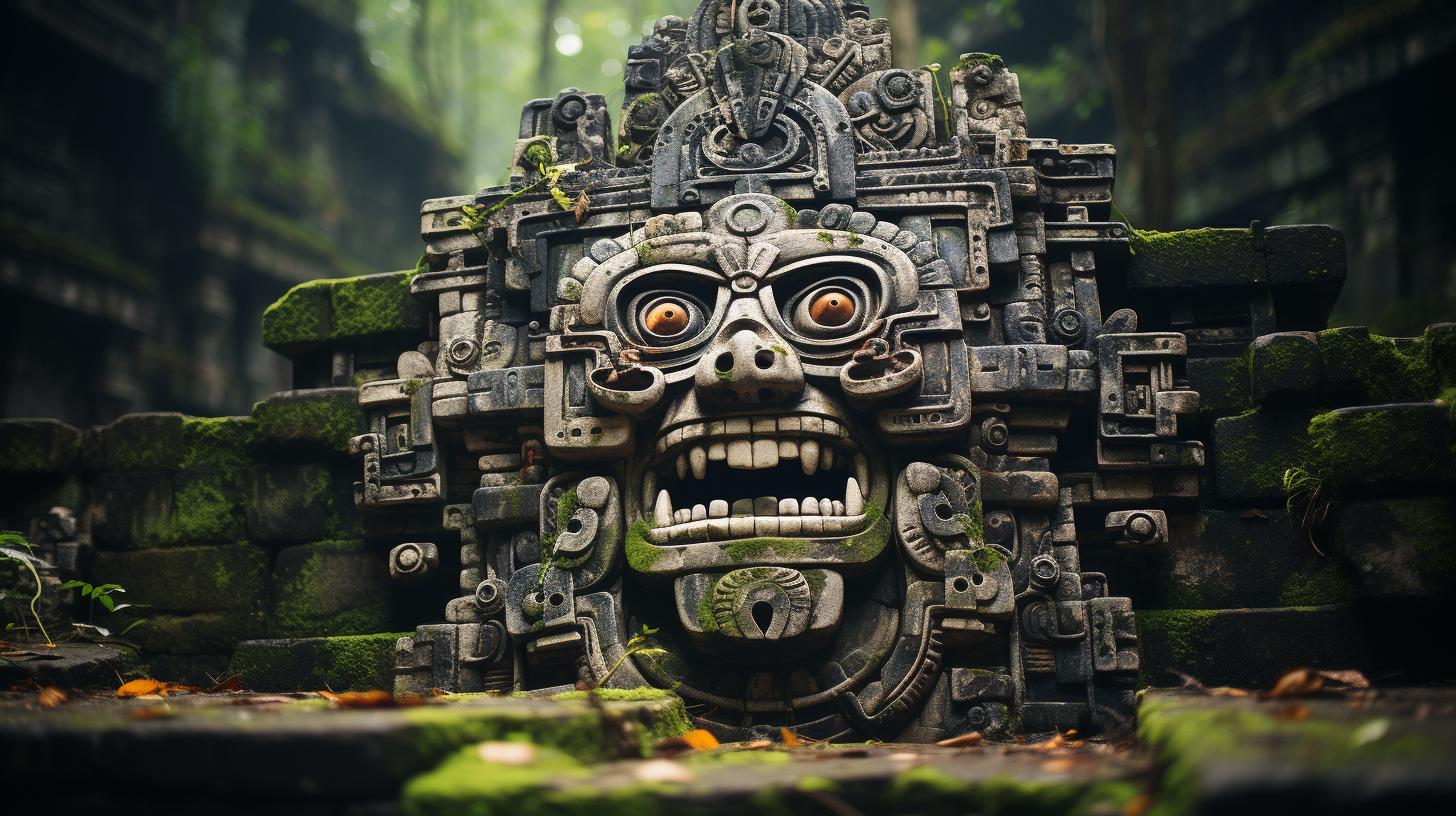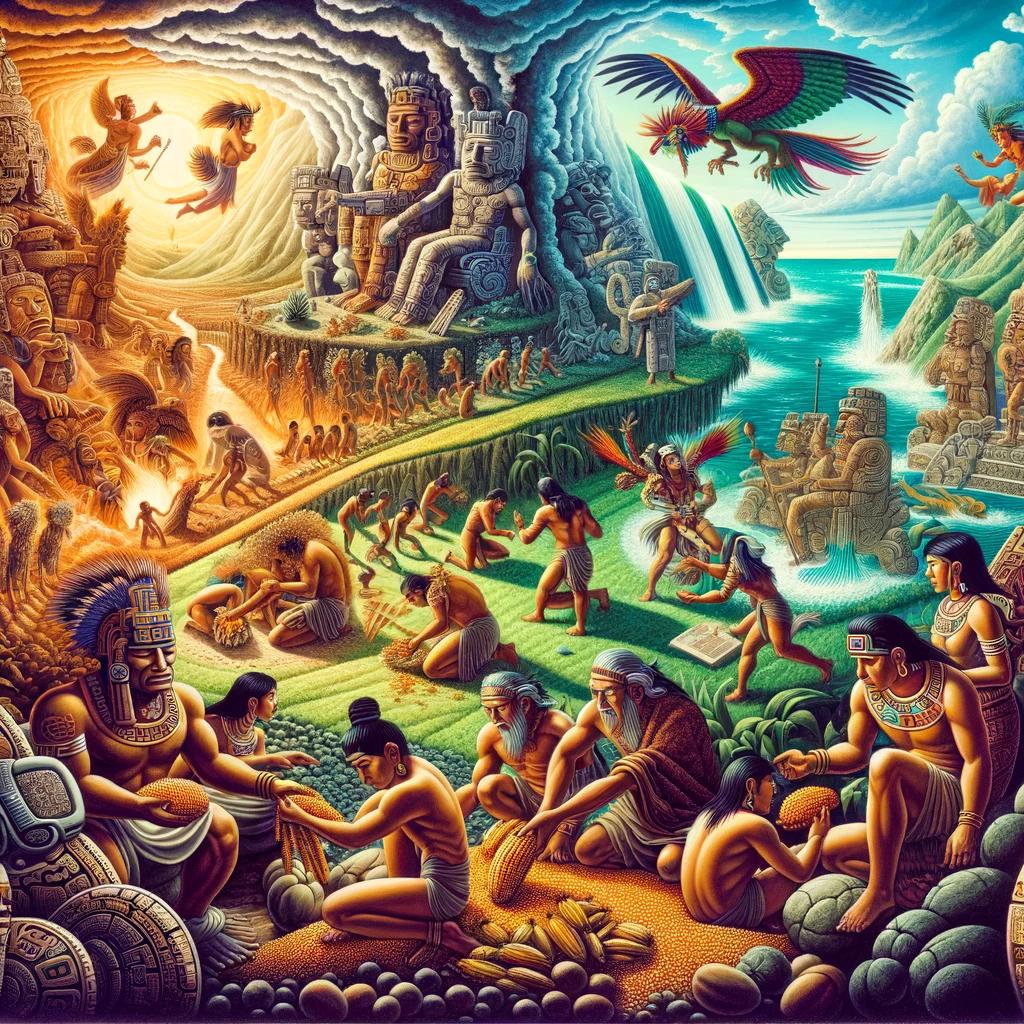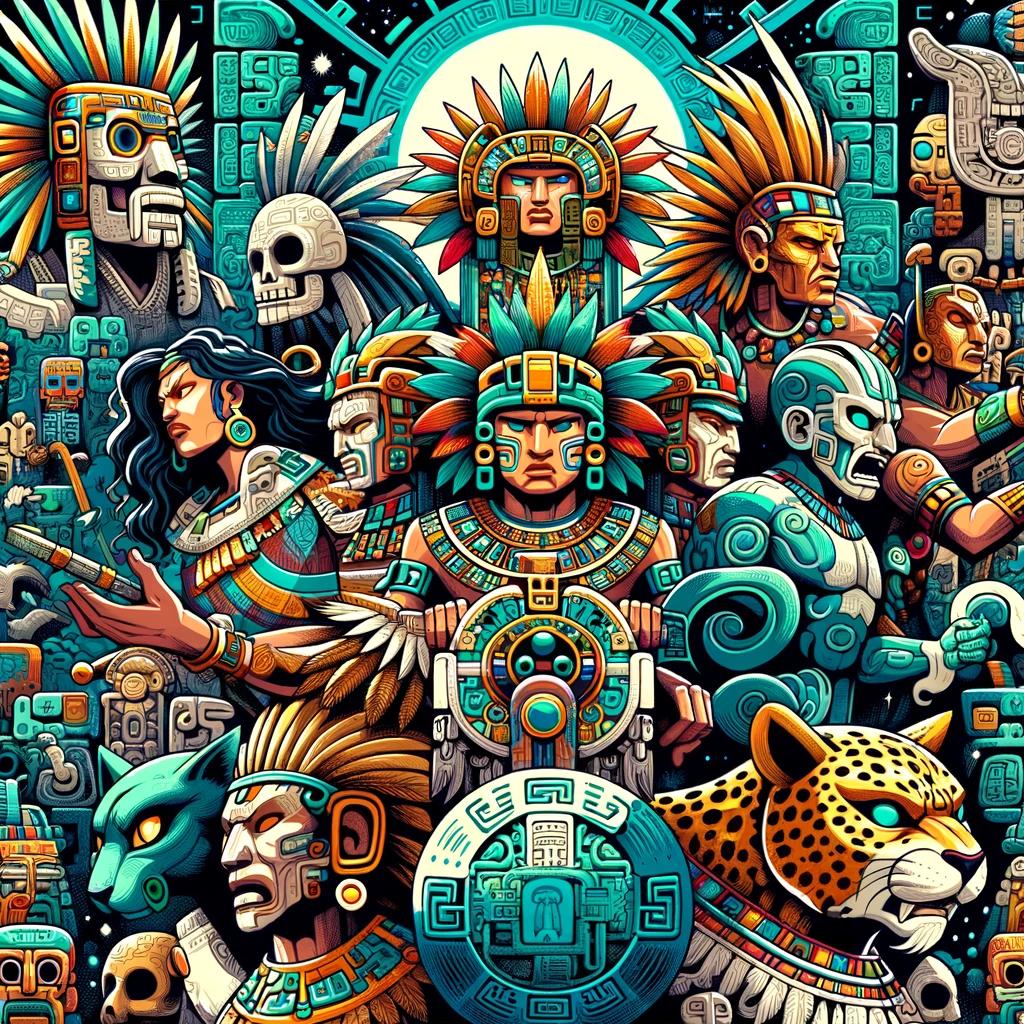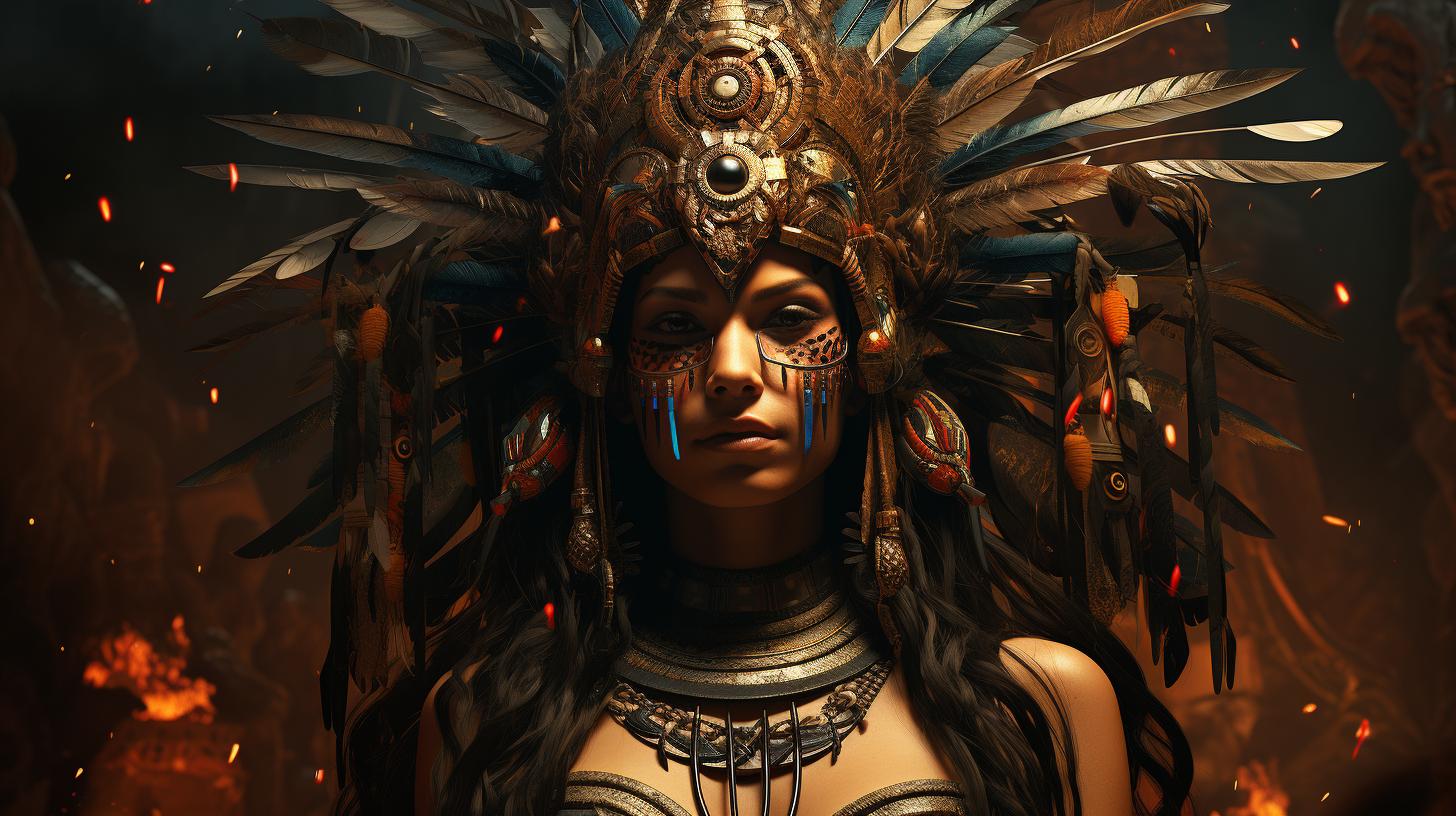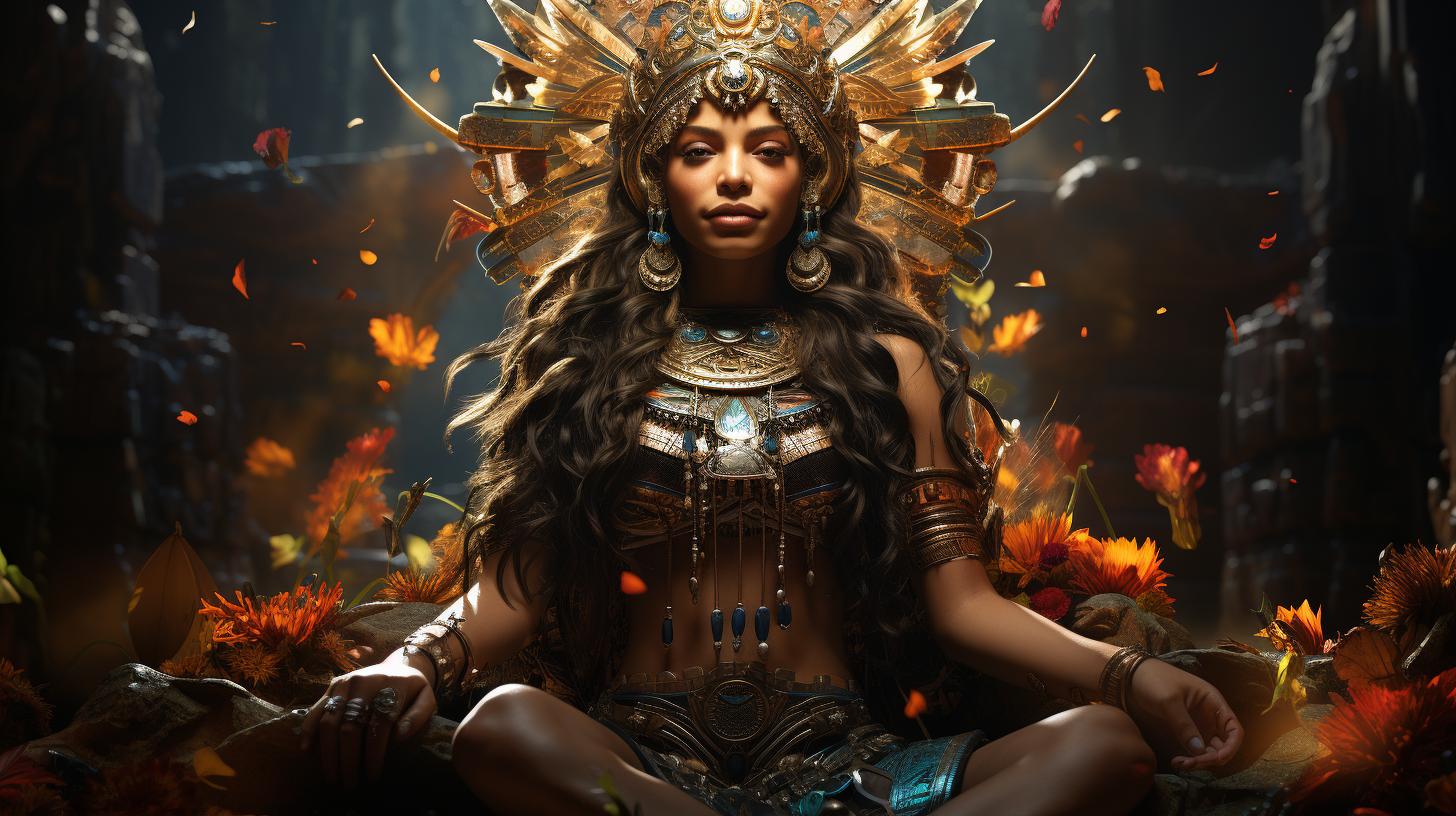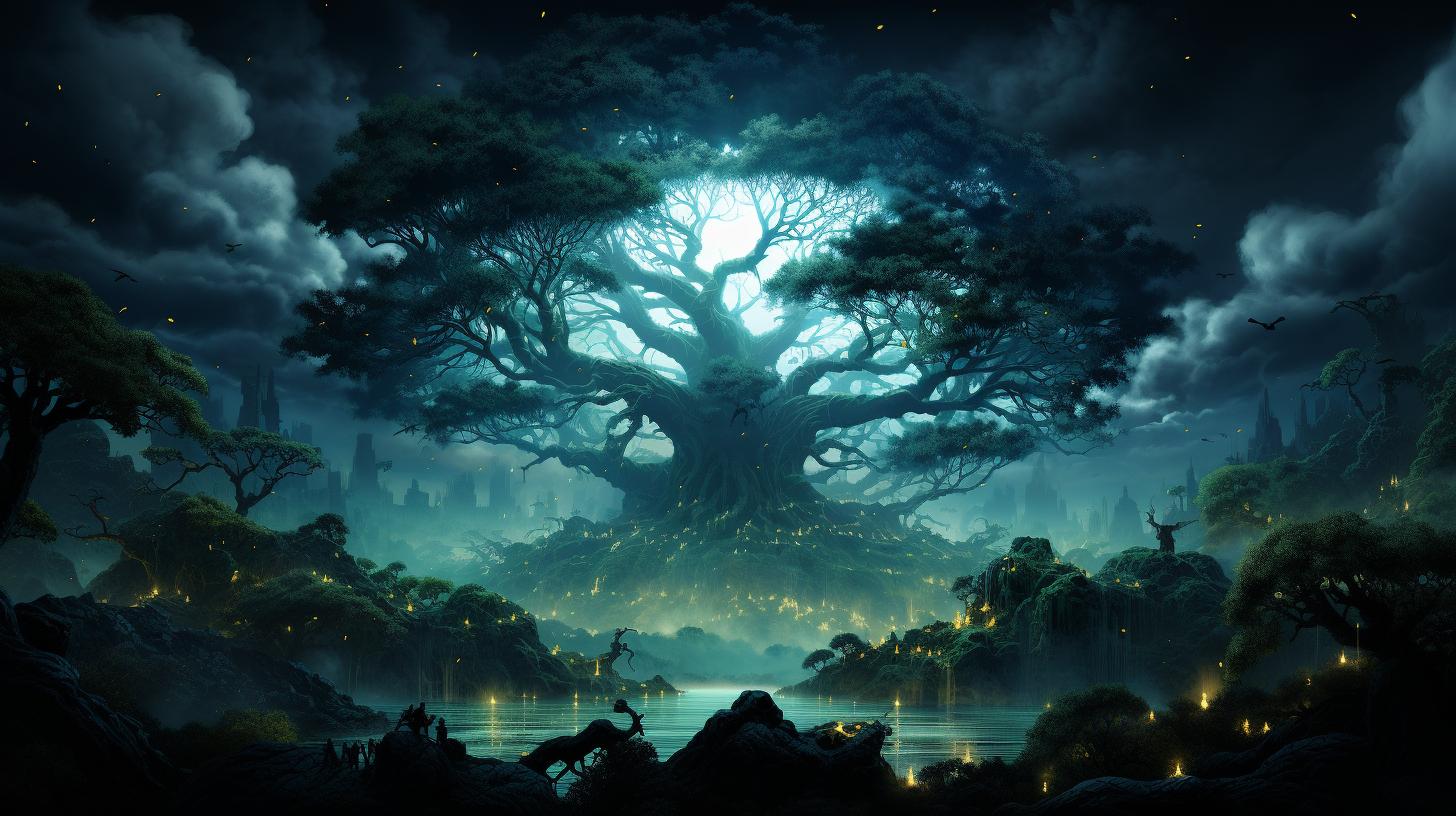Buluc Chabtan: The Mayan God of War, Violence, and Sudden Death
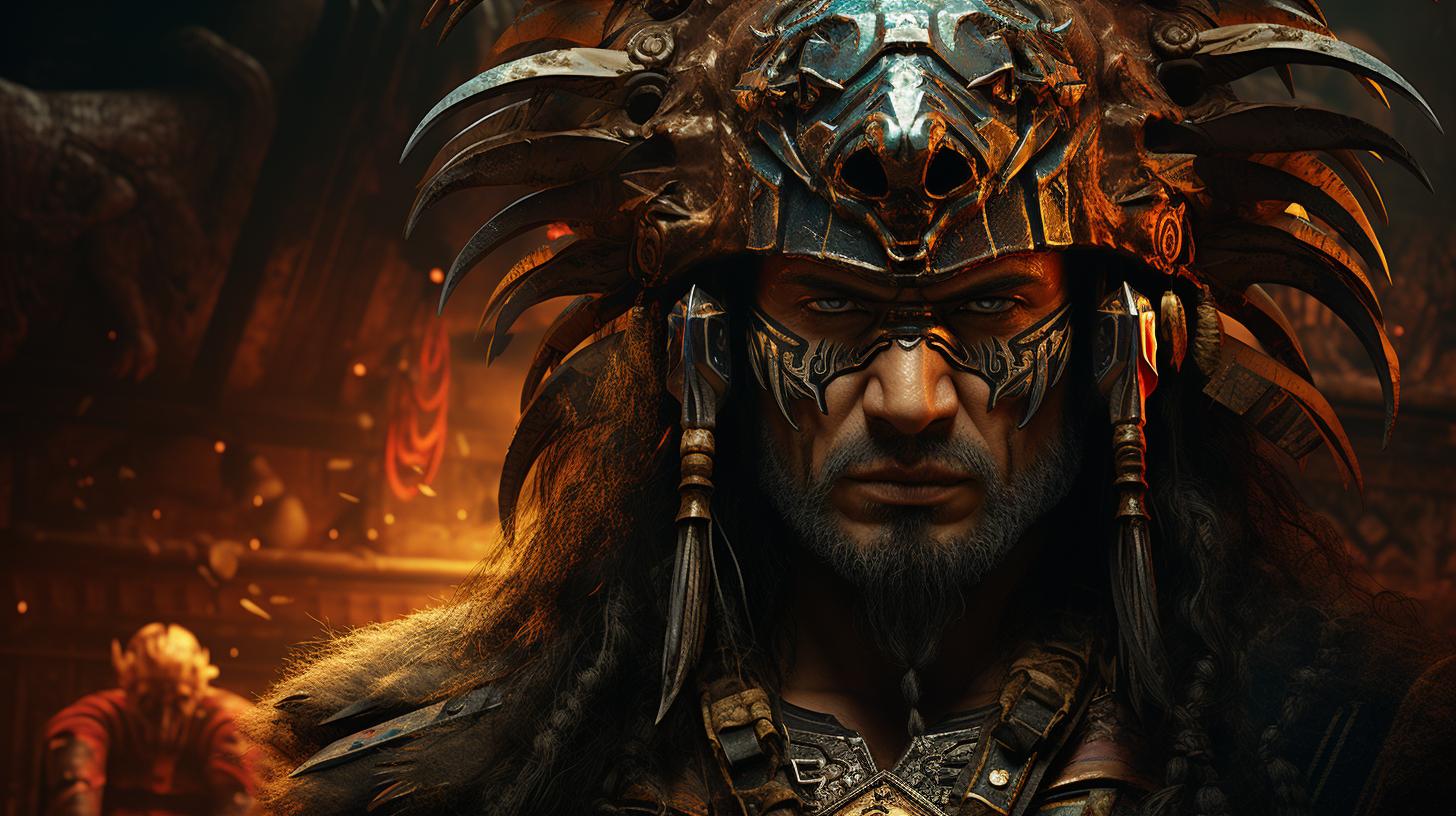
Buluc Chabtan, the Mayan god of war and violence, holds a significant place in the ancient Maya religion. This deity has origins rooted in Mayan mythology and plays a crucial role in their pantheon.
Known for his symbolism and representations, Buluc Chabtan was worshipped through specific rituals and ceremonies. Alongside other major gods like Kukulcán, Itzamná, Ix Chel, and Ah Puch, Buluc Chabtan forms an integral part of the Maya culture, showcasing their beliefs in life, death, and the natural world.
Overview of Mayan Religion
The Mayan civilization, known for its advanced understanding of astronomy, mathematics, and architecture, also had a rich religious belief system. Mayan religion was polytheistic, meaning they worshiped multiple gods, each representing different aspects of life, death, and nature.
This intricate religious system played a significant role in shaping Mayan society and culture.
Mayan religion revolved around the worship of deities who were believed to have control over various elements of the universe.
These gods were revered and respected through rituals, sacrifices, and ceremonies performed by the Mayan priests. The religious practices were deeply ingrained in their daily lives and permeated every aspect of Mayan society.
Beliefs and Concepts
- The Mayans believed in a cyclical nature of time, where events repeated themselves in a predictable pattern. This cyclical view of time influenced their religious rituals and ceremonies.
- They believed in the concept of a cosmos divided into three realms: the heavens, the earth, and the underworld.
Each realm was associated with different gods and had its own significance within the Mayan cosmology.
- The Mayans believed in the interconnectivity between humans and the gods. They believed that their everyday actions and rituals affected the balance and harmony between them and the divine beings.
- The Mayan religion also placed a heavy emphasis on the importance of nature and its connections to the gods.
Elements such as water, fire, wind, and celestial bodies were considered sacred and played significant roles in their religious practices.
Rituals and Ceremonies
The Mayans performed various rituals and ceremonies to honor and communicate with the gods. These rituals often involved bloodletting, offerings, chanting, dancing, and sacrifices. The purpose of these acts was to maintain harmony and balance in the cosmos and ensure the well-being of the community.
The specific rituals and ceremonies varied depending on the god being worshiped and the occasion. They included religious festivals, agricultural ceremonies, and rites performed during important celestial events such as solstices and equinoxes.
These rituals were meticulously planned and carried out by a group of religious specialists, including priests, shamans, and diviners.
Moral and Ethical Beliefs
Mayan religion also encompassed moral and ethical beliefs that guided the behavior and actions of the community. Concepts such as respect for elders, communal harmony, and the importance of fulfilling obligations were deeply ingrained in their religious teachings.
Through their religious beliefs, the Mayans sought to understand the complexities of the world around them and establish a harmonious relationship with the gods. The rich tapestry of their religious practices and beliefs provided a sense of identity, purpose, and guidance in their daily lives.
Buluc Chabtan: The Mayan God of War and Violence
Buluc Chabtan, known as the Mayan god of war and violence, holds significant importance in the ancient Mayan religion. This deity is associated with the darker aspects of life and death, embodying the fierce and unpredictable nature of warfare.
Let us delve into the origins, symbolism, and worship rituals surrounding Buluc Chabtan.
Origins and Importance of Buluc Chabtan
The origins of Buluc Chabtan trace back to the earliest Mayan civilization, where this god gained prominence as a fierce warrior and instigator of violent acts. The Mayans believed that Buluc Chabtan played a vital role in determining the outcomes of battles, providing strength and protection to warriors on the battlefield.
Buluc Chabtan’s importance extended beyond warfare, as the god was also associated with sudden and unexpected death. The Mayans revered Buluc Chabtan as a powerful deity who could either bring prosperity and victory or unleash destruction and chaos upon their lives.
Symbolism and Representations of Buluc Chabtan
Buluc Chabtan’s symbolism reflects the god’s connection to war and violence. Represented in Mayan art and sculptures, Buluc Chabtan is often depicted with a black line across the eyes, signifying the deity’s association with death and the darkness that accompanies warfare.
Furthermore, visual representations of Buluc Chabtan frequently portray the god wielding weapons, such as knives or spears, emphasizing the god’s role as a harbinger of violence. These depictions serve as a reminder of the god’s power and serve as symbols of both fear and respect.
Worship and Rituals Associated with Buluc Chabtan
Buluc Chabtan was worshipped through various rituals and ceremonies conducted by the Mayan priests. These rituals often involved offerings and sacrifices, with the belief that the blood of the sacrificial victims would nourish and appease the deity.
Mayan warriors sought the favor of Buluc Chabtan through dedicated rituals before heading into battle. Special prayers and offerings were made to gain the god’s protection and support, as well as to ensure victory against their enemies.
The worship of Buluc Chabtan also included community rituals conducted in times of crises or imminent danger. The Mayans believed that by performing these rituals, they could invoke the god’s assistance in averting disaster and violence.
Buluc Chabtan’s role as the Mayan god of war and violence is an integral part of Maya culture and mythology. Their worship and reverence for this deity demonstrate the significance of warfare and its impact on their society during that time.
Other Major Gods in Maya Pantheon
Within the rich cultural and religious beliefs of the Maya civilization, numerous gods reigned supreme, each with their unique roles and significance. This section explores some of the other major deities within the Maya pantheon, shedding light on their importance and influence.
Kukulcán: The Feathered Serpent Deity
Kukulcán, also known as Gucumatz and Quetzacóatl in other Mesoamerican cultures, was revered as the Serpent deity with feathers. Believed to possess control over water, wind, and the creation of the world, Kukulcán held great power and knowledge.
The Maya attributed to him teachings on law, agriculture, literature, arts, medicine, and architecture. The majestic pyramid of Chichén Itzá, known as El Castillo or Temple of Kukulcán, stands as a testament to the reverence bestowed upon this deity.
One of the most remarkable events associated with Kukulcán is the snake-shaped shadow that moves down the pyramid’s steps during the spring and fall equinoxes.
Itzamná: The Creator and Sky God
Itzamná played a crucial role in Maya culture as the founder and sky god.
This deity was known for his wisdom, healing qualities, and the ability to resurrect the dead. Itzamná was associated with other gods, such as the sun deity Kinich Ahau, and was regarded as the husband of the goddess Ix Chel and the father of their thirteen children.
He is credited with the foundation of the city of Chichén Itzá and the creation of the earliest writing system in the region.
Ix Chel: The Goddess of Fertility and Destruction
Ix Chel held significant influence as the goddess of marriage, love, fertility, and destruction in Maya religion.
She was believed to have powers over lunar cycles, climatic phenomena, and the ability to create and destroy the Earth. Ix Chel’s depictions varied, sometimes appearing as a seductive young woman and other times as an elderly figure with claws and symbols of death.
The annual Sacred Maya Crossing, a homage to Ix Chel, involves hundreds of Maya canoeists crossing the Caribbean Sea to visit a temple dedicated to the goddess on Cozumel Island.
Ah Puch: The God of Death and the Underworld
Ah Puch held the title of the god of death in Maya religion, governing the underworld and Maya hell.
This deity had a taste for human sacrifices and was depicted as a decomposing figure adorned with skeletal masks, bones, and skulls. Often accompanied by a dog or owl, Ah Puch also represented childbirth and beginnings, but stood in opposition to the gods of fertility.
These major gods, along with Buluc Chabtan, offer a glimpse into the intricate belief system of the Maya civilization. Their worship, mythology, and symbolism provide a deeper understanding of the Maya’s connection to the divine and their interpretation of the forces that shaped their lives.
Comparisons and Connections Between Gods
Within the rich pantheon of the Maya gods, there are intricate connections and comparisons that provide a deeper understanding of their roles and significance. Among these gods, Buluc Chabtan, the god of war and violence, demonstrates both similarities and contrasts with other major deities.
One noteworthy parallel can be drawn between Buluc Chabtan and Ah Puch, the god of death and the underworld. Both deities embody aspects of mortality, but while Ah Puch presides over the realm of the deceased, Buluc Chabtan’s domain lies in sudden death and war.
Together, they represent the cycle of life, death, and transition in Maya belief.
In contrast, Itzamná, the creator god and the ruler of the sky, shares little in common with Buluc Chabtan.
Itzamná represents the power of creation and wisdom, while Buluc Chabtan embodies the destructive forces and violence within the human experience. Despite these differences, both gods play significant roles in the Maya cosmology.
Similarly, Ix Chel, the goddess of fertility and destruction, shares some connections with Buluc Chabtan. Both deities possess transformative powers, symbolizing the duality of creation and destruction. While Ix Chel is associated with nurturing and growth, Buluc Chabtan represents the brutal and sudden end to life.
Lastly, Kukulcán, the feathered serpent deity, stands apart from Buluc Chabtan in terms of their divine attributes. While both hold significant roles in Maya religion, Kukulcán represents the natural elements and the laws of civilization, whereas Buluc Chabtan is the embodiment of warfare, aggression, and the unpredictability of death.
Understanding the comparisons and connections between Buluc Chabtan and other Maya gods provides a comprehensive view of the complex interplay of forces within the Maya belief system. These diverse deities complement and contrast with one another, creating a multifaceted understanding of the spiritual and natural world in which the Maya lived.
Role of Buluc Chabtan in Mayan Culture and Society
Buluc Chabtan, the Mayan god of war and violence, played a significant role in the culture and society of the ancient Maya civilization. As a deity associated with warfare and sudden death, Buluc Chabtan held great importance to the Mayans, especially warriors and those seeking success in battle.
Protection in Warfare: In Mayan society, warfare was an integral part of their culture, and Buluc Chabtan was believed to offer protection and aid to warriors on the battlefield. Warriors would pray and perform rituals to honor Buluc Chabtan, seeking his favor and assistance in winning battles.
Social Hierarchy: Buluc Chabtan also played a role in the social hierarchy of the Mayan civilization. As the god of violence and sudden death, his cult and worship were closely associated with the ruling class, particularly the military elites and warrior nobles.
This elevated the status of those who were devoted to the worship of Buluc Chabtan.
Cult of Sacrifice: The worship of Buluc Chabtan was often intertwined with the practice of human sacrifice in Mayan culture.
It was believed that offering human lives as sacrifices to the god would appease him and ensure victory in warfare. These sacrifices, although gruesome and horrifying by today’s standards, played a significant role in Mayan religious practices.
Symbols and Representations: Buluc Chabtan was commonly depicted with a black line around his eyes, symbolizing his association with death and violence. His appearance often portrayed him holding weapons or engaging in violent acts.
These visual representations served as a reminder of his power and authority.
Influence on Daily Life: The influence of Buluc Chabtan extended beyond warfare and into the daily lives of the Mayans.
The belief in his power and ability to cause sudden death motivated people to live virtuous lives and avoid actions that may attract his attention. It created a sense of fear and reverence for the god, impacting various aspects of Mayan society.
Legacy in Mayan Culture: Buluc Chabtan, along with other major gods in the Maya pantheon, left a lasting legacy in Mayan culture. The rituals, worship practices, and legends associated with Buluc Chabtan continue to be of great significance in understanding the complex belief system of the ancient Maya people.
In conclusion, Buluc Chabtan, as the Mayan god of war and violence, played a crucial role in Mayan culture and society. His association with warfare, protection, and sudden death made him an important figure, influencing everything from spiritual ceremonies to social hierarchy.
The legacy of Buluc Chabtan is a testament to the rich and intricate religious beliefs of the ancient Maya civilization.
Human Sacrifice in Mayan Religion
Human sacrifice held a significant role in the Mayan religious practices, including rituals dedicated to Buluc Chabtan, the god of war and violence. The Mayas believed that offering human lives to the gods was essential for maintaining the balance between the mortal world and the divine realm.
These sacrificial ceremonies were intricately woven into the fabric of Mayan society and often took place at major temples or sacred sites. Captured enemies, prisoners of war, and sometimes even volunteers would be chosen as offerings to appease the gods, particularly Buluc Chabtan.
The sacrificial methods varied, but some common practices involved decapitation, heart extraction, or drowning. These gruesome rituals were believed to please Buluc Chabtan and ensure victory in battle or protection against sudden death.
It is important to note that human sacrifice was not limited to Buluc Chabtan alone but was practiced across various Mayan deities. Each god had their own preferred sacrifices and rituals, reflecting their distinct domains and attributes.
Forms of Sacrifice
Mayans carried out sacrifices in different forms to honor their gods. Some of these practices included:
- Heart Extraction: This ritual involved the removal of the heart from the sacrificial victim, symbolizing the offering of life force to the gods.
Hearts were often presented as an offering to Buluc Chabtan and other deities associated with war and bloodshed.
- Athletic Sacrifices: These sacrifices were particular to Buluc Chabtan, who favored strong and skilled warriors.
Volunteers would engage in mock battles or other physical contests, with the understanding that the loser would be sacrificed to the god.
- Public Display: Sacrifices were often carried out in public ceremonies, serving both as a religious act and a means of reinforcing social order and control.
These events were spectacles where the community would come together to witness the offerings and reaffirm their faith.
It is crucial to approach the topic of human sacrifice in Mayan religion with cultural understanding and respect.
While these practices may seem barbaric from a modern perspective, they held deep spiritual significance in the belief system of the ancient Maya civilization.
Contemporary Worship and Legacy of Buluc Chabtan
Although the ancient Mayan civilization has long disappeared, the legacy and worship of Buluc Chabtan still hold significance in contemporary times.
Today, there are individuals and groups who continue to honor the Mayan gods, including Buluc Chabtan, as a part of their spiritual practices.
1. Modern Mayan Rituals: In various regions of Mexico and Central America, Mayan communities continue to perform rituals and ceremonies dedicated to Buluc Chabtan.
These ceremonies involve offerings, prayers, and dances to seek protection, success in battles, and to avoid sudden death.
2. Integration with Christianity: Due to the influence of colonization and the spread of Christianity, the worship of Buluc Chabtan has seen some assimilation and syncretism with Catholicism.
In certain areas, Buluc Chabtan may be venerated alongside Christian saints or incorporated into local Catholic festivals.
3. Traditional Healers and Shamans: Within Mayan communities, traditional healers and shamans, known as “aj q’ij” or “h’men,” still play a significant role in preserving and passing down ancient knowledge and practices related to Buluc Chabtan.
They continue to perform healing rituals, divination, and spiritual guidance for community members.
Legacy and Cultural Significance
Buluc Chabtan’s legacy goes beyond religious worship and into the realms of art, literature, and even popular culture. This deity’s representation in various forms of media, such as paintings, sculptures, and contemporary literature, serves as a reminder of the rich cultural heritage of the Mayan civilization and its enduring impact.
- Artistic Depictions: Buluc Chabtan’s distinct iconography, with the line around the eyes and the association with war and violence, has inspired many artists both within and outside the Mayan community to create pieces that capture the essence and symbolism of this deity.
- Literary References: Buluc Chabtan’s role as the god of war and sudden death has found its way into modern literature.
Authors, both indigenous and non-indigenous, have incorporated the myths and legends of this deity into their works, ensuring that the stories surrounding Buluc Chabtan continue to be celebrated and explored.
- Cultural Identity: The worship of Buluc Chabtan persists as a part of the cultural identity of many Mayan communities.
It serves as a reminder of their ancestral heritage and their deep connection to the ancient traditions and beliefs that have withstood the test of time.
In conclusion, the contemporary worship of Buluc Chabtan among Mayan communities, as well as the deity’s enduring legacy in art, literature, and cultural identity, serves as a testament to the lasting impact of the Mayan civilization and their intricate religious beliefs.

